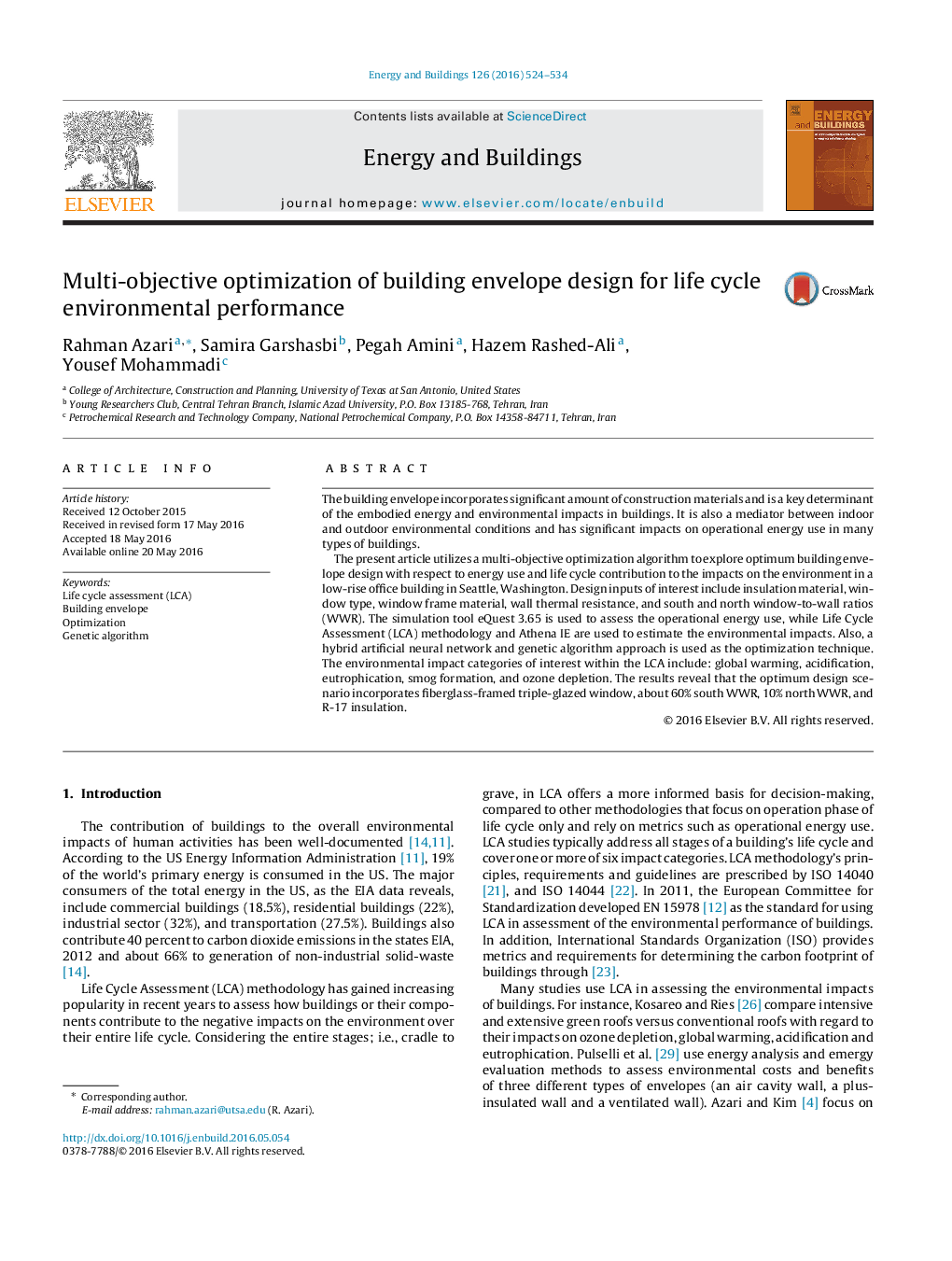| کد مقاله | کد نشریه | سال انتشار | مقاله انگلیسی | نسخه تمام متن |
|---|---|---|---|---|
| 261955 | 504006 | 2016 | 11 صفحه PDF | دانلود رایگان |
The building envelope incorporates significant amount of construction materials and is a key determinant of the embodied energy and environmental impacts in buildings. It is also a mediator between indoor and outdoor environmental conditions and has significant impacts on operational energy use in many types of buildings.The present article utilizes a multi-objective optimization algorithm to explore optimum building envelope design with respect to energy use and life cycle contribution to the impacts on the environment in a low-rise office building in Seattle, Washington. Design inputs of interest include insulation material, window type, window frame material, wall thermal resistance, and south and north window-to-wall ratios (WWR). The simulation tool eQuest 3.65 is used to assess the operational energy use, while Life Cycle Assessment (LCA) methodology and Athena IE are used to estimate the environmental impacts. Also, a hybrid artificial neural network and genetic algorithm approach is used as the optimization technique. The environmental impact categories of interest within the LCA include: global warming, acidification, eutrophication, smog formation, and ozone depletion. The results reveal that the optimum design scenario incorporates fiberglass-framed triple-glazed window, about 60% south WWR, 10% north WWR, and R-17 insulation.
Figure optionsDownload as PowerPoint slide
Journal: Energy and Buildings - Volume 126, 15 August 2016, Pages 524–534
